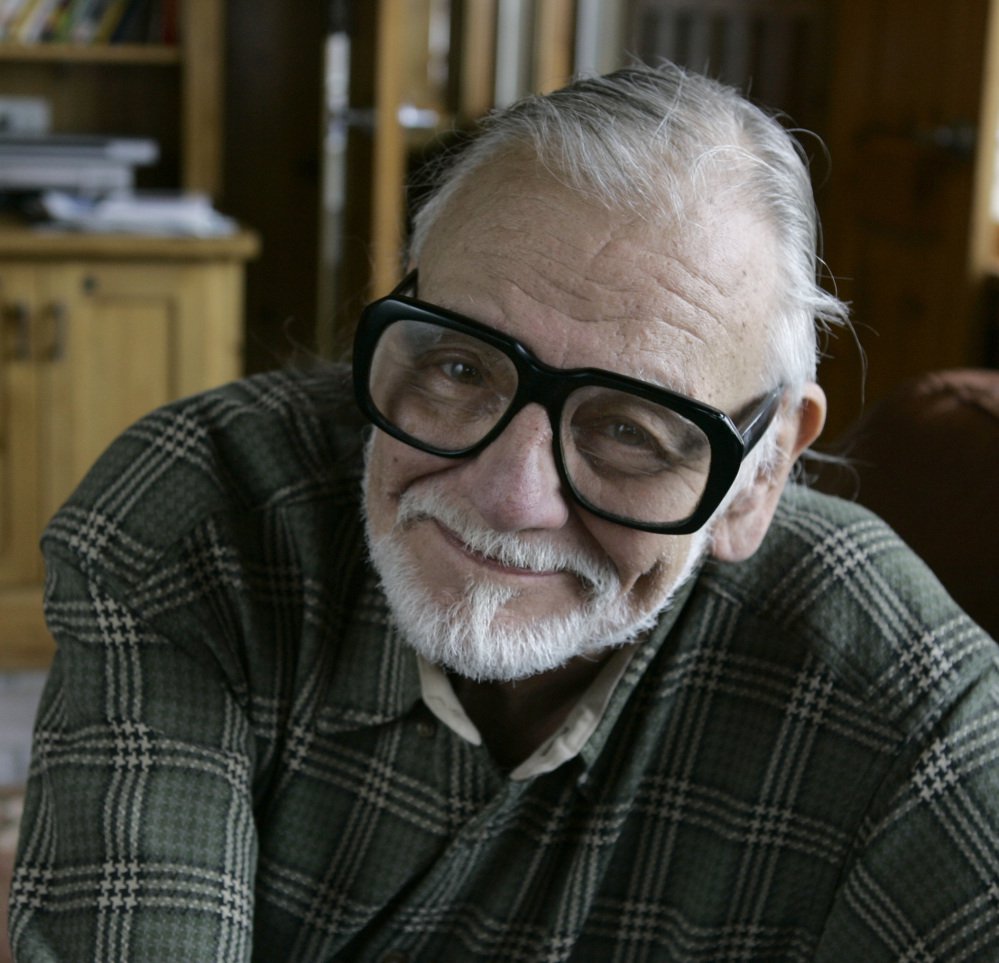NEW YORK — George Romero, whose classic “Night of the Living Dead” and other horror films turned zombie movies into social commentaries and who saw his flesh-devouring undead spawn countless imitators, remakes and homages, has died. He was 77.
Romero died Sunday following a battle with lung cancer, said his family in a statement provided by his manager Chris Roe. Romero’s family said he died while listening to the score of “The Quiet Man,” one of his favorite films, with his wife, Suzanne Desrocher, and daughter, Tina Romero, by this side.
Romero is credited with reinventing the zombie movie with his directorial debut, the 1968 cult classic, “Night of the Living Dead.” The movie set the rules imitators lived by: Zombies move slowly, lust for human flesh and can only be killed when shot in the head. If a zombie bites a human, the person dies and returns as a zombie.
Romero’s zombies, however, were always more than mere cannibals; they were metaphors for conformity, racism, mall culture, militarism, class differences and other social ills.
“The zombies, they could be anything,” Romero told The Associated Press in 2008. “They could be an avalanche, they could be a hurricane. It’s a disaster out there. The stories are about how people fail to respond in the proper way. They fail to address it. They keep trying to stick where they are, instead of recognizing maybe this is too big for us to try to maintain. That’s the part of it that I’ve always enjoyed.”
“Night of the Living Dead,” made for about $100,000, featured flesh-hungry ghouls trying to feast on humans holed up in a Pennsylvania house. In 1999, the Library of Congress inducted the black-and-white masterpiece into the National Registry of Films.
Many considered the film to be a critique on racism in America. The sole black character survives the zombies, but he is fatally shot by rescuers.
Ten years after “Night of the Living Dead,” Romero made “Dawn of the Dead,” where human survivors take refuge from the undead in a mall and then turn on each other as the zombies stumble around the shopping complex.
Film critic Roger Ebert called it “one of the best horror films ever made – and, as an inescapable result, one of the most horrifying. It is gruesome, sickening, disgusting, violent, brutal and appalling. It is also … brilliantly crafted, funny, droll, and savagely merciless in its satiric view of the American consumer society.”
Romero had a sometimes combative relationship with the genre he helped create. He called “The Walking Dead” a “soap opera” and said big-budget films like “World War Z” made modest zombie films impossible. Romero maintained that he wouldn’t make horror films he couldn’t fill them with political statements.
“People say, ‘You’re trapped in this genre. You’re a horror guy.’ I say, ‘Wait a minute, I’m able to say exactly what I think,’ ” Romero told the AP. “I’m able to talk about, comment about, take snapshots of what’s going on at the time. I don’t feel trapped. I feel this is my way of being able to express myself.”
The third in the Romero’s zombie series, 1985’s “Day of the Dead,” was a critical and commercial failure.
“Land of the Dead” in 2005 was the most star-packed of the bunch – the cast included Dennis Hooper, John Leguizamo, Asia Argento and Simon Baker. Two years later came “Diary of the Dead,” another box-office failure.
There were other movies interspersed with the “Dead” films. Some were moderately successful, others box-office flops.
George Andrew Romero was born on Feb. 4, 1940, in New York City. He grew up in the Bronx, and he was a fan of horror comics and movies in the pre-VCR era.
Send questions/comments to the editors.



Success. Please wait for the page to reload. If the page does not reload within 5 seconds, please refresh the page.
Enter your email and password to access comments.
Hi, to comment on stories you must . This profile is in addition to your subscription and website login.
Already have a commenting profile? .
Invalid username/password.
Please check your email to confirm and complete your registration.
Only subscribers are eligible to post comments. Please subscribe or login first for digital access. Here’s why.
Use the form below to reset your password. When you've submitted your account email, we will send an email with a reset code.